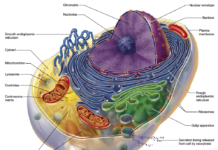Growing Role for Supplements in Prevention of Skin Cancer
By Jim English
Night gazers across North America are occasionally treated to glimpse of the aurora borealis, with sightings coming in from as far south as the Mexico border. The appearance of northern lights at such southern latitudes usually coincides with a stupendous increase in the output of solar radiation that marks the peak of the sun’s eleven-year solar cycle. This period of activity, notable for the passage of dark spots across the surface of the sun, offers viewers a stark reminder that our local star – in addition to providing life-giving light and heat – also generates dangerous, life-threatening radiation that plays a significant role in cancer.
Photoaging
What we think of as visible light is actually a spectrum composed of over 1,500 different wavelengths that includes ultraviolet (UV) radiation. Short-term exposure to UV rays can result in a tan or sunburn, depending on length of exposure, skin color and other genetic factors. Prolonged exposure to ultraviolet A (UVA) or ultraviolet B (UVB) increases photoaging, including wrinkles and hyperpigmentation that becomes more evident with advanced age. (1) UV radiation at high doses is responsible for increased incidence of skin cancer, the most common form of human cancer.
Skin Cancer
Many skin tumors are not malignant, and in time may spontaneously regress. Examples of benign tumors include moles, seborrheic keratosis keratoacanthoma, and the often premalignant actinic keratosis. Malignant tumors include basal cell carcinoma, squamous cell carcinoma and malignant melanoma. (2) More than 1.3 million cases of basal cell and squamous cell skin cancer will be diagnosed this year.
Basal Cell Carcinoma
Basal cell carcinoma, the type of skin cancer that struck former President Bill Clinton last year, is one of the most common – accounting for about 75 percent of all cases – and most curable forms of skin cancer. Men are more than twice as likely as women to get basal cell cancers. Exposure to the sun and having fair skin are significant risk factors for both basal cell carcinoma and the more deadly malignant melanoma. Basal cell carcinoma begins in the epidermis, the top layer of skin, usually on the neck and head – areas that are most exposed to direct sunlight or previously burned. Lesions are usually smooth, surrounded by a pearly border that may be pigmented or have an ulceration in the center. Lesions grow slowly, rarely spread into other parts of the body (metastasize) and rarely cause death. Treatment for basal cell carcinoma involves surgical removal, freezing or local chemotherapy.
Squamous Cell Carcinoma
Squamous cell carcinoma is a cancer that can affect both skin and mucous membranes. Often occurring in sun exposed or burned areas, lesions appear as rough scaly nodules that can ulcerate and metastasize. The cancerous keratinocyte cells often extend down into the dermis, requiring surgical removal and the possible removal of enlarged lymph nodes for all but the smallest of lesions.
Malignant Melanoma
Malignant melanoma, the form of skin cancer that Arizona Senator John McCain was diagnosed with on the campaign trail last year, is the most serious and deadly form of skin cancer. Melanoma is increasing at an alarming rate. Ten years ago chances of developing malignant melanoma were 1 in 250; today estimates that an individual will have malignant melanoma are 1 in 70. In raw numbers, nearly 50,000 cases of melanoma will be diagnosed in the United States this year. And while melanoma accounts for just four percent of skin cancer cases, it causes 79 percent of skin cancer deaths, according to the American Cancer Society.
Risk of developing melanoma increases with sun exposure, particularly early childhood sunburns. While in its earliest stages melanoma may only be present on the surface of the skin, it is a highly invasive cancer that spreads easily. Prognosis is dependent on the depth of invasion of the tumor; therefore early detection and removal are critical.
Nutritional Protection
Solar radiation is one of the most important environmental stress agents for human skin, causing sunburn, premature skin aging, and skin cancer. (3) Using sunscreens, staying in the shade and covering exposed skin are still among the best methods for protecting skin. Additionally, research now indicates that several nutrients and antioxidants can aid in protecting and healing damaged skin and may contribute to lowering the risk of developing skin cancer.
Green Tea
Green tea contains natural antioxidant polyphenolic compounds known as epicatechins. Researchers have shown that green tea polyphenols – taken orally or applied topically – exert photoprotective effects that inhibit ultraviolet radiation-induced skin tumors (tumorigenesis). Studies have also shown that green tea extract possesses anti-inflammatory activity, protecting against ultraviolet (UV) light-induced skin inflammation (erythema). (4) The major polyphenolic chemopreventive constituent in green tea responsible for these biochemical or pharmacological effects is (-)-epigallocatechin-3-gallate (EGCG).
When researchers tested green tea extracts in animal models they found that these polyphenolic compounds afforded protection against chemical carcinogenesis and photocarcinogenesis in mouse skin. In similar experimental studies with human skin, green tea polyphenols again demonstrated anti-inflammatory and anticarcinogenic properties. (5)
Antioxidants
When sunlight strikes exposed skin the resulting cascade of free radicals causes damage to skin tissues, reduces elasticity and contributes to the formation of “age spots,” wrinkles, increasing the risk of developing skin cancer. In clinical trials, a number of antioxidants, including carotenoids and vitamins E and C, have been found to be capable of scavenging reactive oxygen species generated during photooxidative stress caused by sunlight.
Vitamin C and E
In one prospective, randomized, placebo-controlled study, a group of 40 healthy volunteers were given either 1] vitamin E (as alpha tocopherol), 2] vitamin C (as ascorbic acid), 3] a combination of both E and C, or 4] a placebo. After fifty days of supplementation the researchers found that levels of vitamin E and C were elevated in skin tissue samples from volunteers receiving either the single or combination antioxidants. Additionally, when researchers exposed the volunteers to UV radiation to induce erythema (sunburn), the combination of C and E together protected the skin and suppressed the sunburn reaction. (6)
In a second study investigators measured the effectiveness of oral supplements of vitamin E and C to prevent suppression of the immune system in skin exposed to photooxidative stress. They found that the combination of vitamin E and C prevented the suppression of the local immune response, concluding that the combination “could be exploited for the prevention of solar radiation-induced skin cancer in an antioxidant intervention study.” (7) These and other studies suggest that vitamin E has a synergistic effect with ascorbic acid, due to vitamin C’s ability to recycle vitamin E.
Carotenoids
Researchers from the Arizona Prevention Center, School of Medicine at the University of Arizona tested the protective effects of oral carotenoids on skin exposed to UV radiation. The researchers supplemented 22 subjects with natural carotenoids for a period of 24 weeks. Daily dosages started at 29.4 mg of beta-carotene, and 0.36 mg of alpha-carotene and increased to 88.2 mg of beta-carotene, and 1.08 mg of alpha-carotene by the end of the study. During the test period researchers exposed small areas (1 cm2) of skin to increasing doses of UV light to determine the minimal erythema dose (MED), defined as a uniform pink color with well-defined borders. During natural carotenoid supplementation, the amount of solar radiation required to induce erythema increased significantly, suggesting that supplementation with natural carotenoids may partially protect human skin from UV-induced erythema. (8)
A second study examining the protective properties of oral carotenoids found that sunburn was suppressed significantly with a combination of carotenoids and vitamin E. The researchers concluded that the antioxidants provided protection against erythema in humans and were effective in diminishing sensitivity to ultraviolet light. (9)
Conclusion
Many people reduce their intake of supplements during the summer. While colds and flu may occur less frequently in warmer months, excess exposure to sunlight can impair the immune system and increase risk of cancer. Antioxidants and carotenoids are just a few of the nutrients that have been shown to shield the skin from UV radiation and suppress sunburn. Continued intake of antioxidants and carotenoids, in conjunction with sunscreen and protective clothing, may pay off in the long run with smoother unblemished skin and reduced risk of developing skin cancer.
References
1. Cerimele D, Celleno L, Serri F. Physiological changes in ageing skin. Br J Dermatol. 1990; 122 (Suppl 35):13-20.
2. http://www.skin-cancers.net/
3. Biesalski HK, Obermueller-Jevic UC. UV light, beta-carotene and human skin – beneficial and potentially harmful effects. Arch Biochem Biophys 2001 May 1;389(1):1-6.
4. Katiyar SK, Elmets CA.. Green tea polyphenolic antioxidants and skin photoprotection (Review). Int J Oncol 2001 Jun;18(6):1307-13.
5. Katiyar SK, Ahmad N, Mukhtar H.. Green tea and skin. Arch Dermatol 2000 Aug;136(8):989-94.
6. Fuchs J, Kern H. Modulation of UV-light-induced skin inflammation by D-alpha-tocopherol and L-ascorbic acid: a clinical study using solar simulated radiation. Free Radic Biol Med. 1998; 25(9):1006-12.
7. Fuchs J, Packer L. Antioxidant protection from solar-simulated radiation-induced suppression of contact hypersensitivity to the recall antigen nickel sulfate in human skin. Free Radic Biol Med 1999 Aug;27(3-4):422-7
8. Lee J, Jiang S, Levine N, Watson RR. Carotenoid supplementation reduces erythema in human skin after simulated solar radiation exposure. Proc Soc Exp Biol Med 2000 Feb;223(2):170-4
9. Stahl W, Heinrich U, Jungmann H, Sies H, Tronnier H. Carotenoids and carotenoids plus vitamin E protect against ultraviolet light-induced erythema in humans. Am J Clin Nutr 2000 Mar;71(3):795-8.













